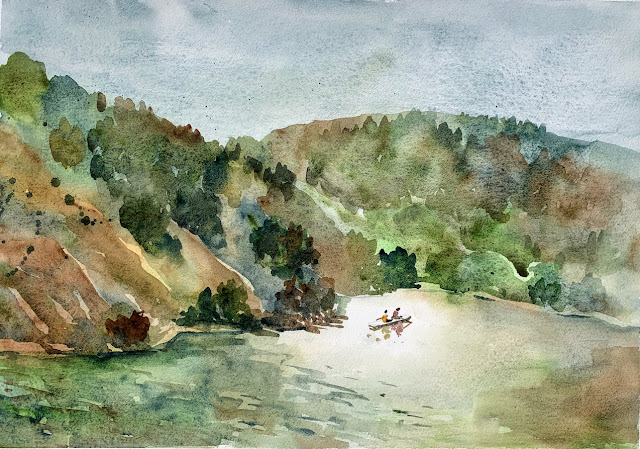Standing

I realize that lately, I have been sitting down to paint, feeling too lazy to set up my easel every time I go for plein-air. I was thinking of how to be loose - big brushes, big movements, and realized that sitting just doesn't make that possible. Gripping the brush with an overhand grip, or using my opposite (left) may all be conducive to looser bolder movements where tightness and details are not important, at least in the beginning. So, no more sitting. I read somewhere that you can use your wrist and move the brush with small tight strokes. Moving from the elbow gives bigger movements, and you cannot get too detailed that way. Moving from the shoulder gives yet bigger movements. Now I realize sitting and standing are worlds apart - and the latter makes you looser, lets you have distance to the paper, and allows you to move more than just your wrist. Today I went plein-air painting on my own to downtown Los Altos, and was drawn to this scene because of the bright yellow umbr...





